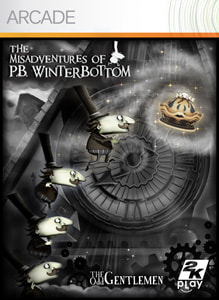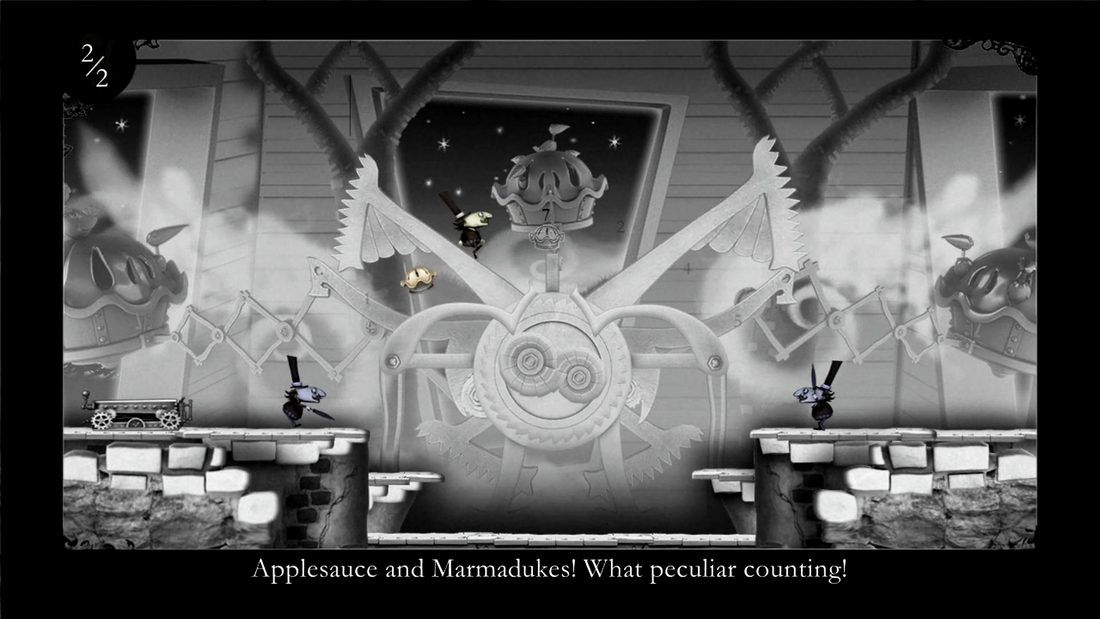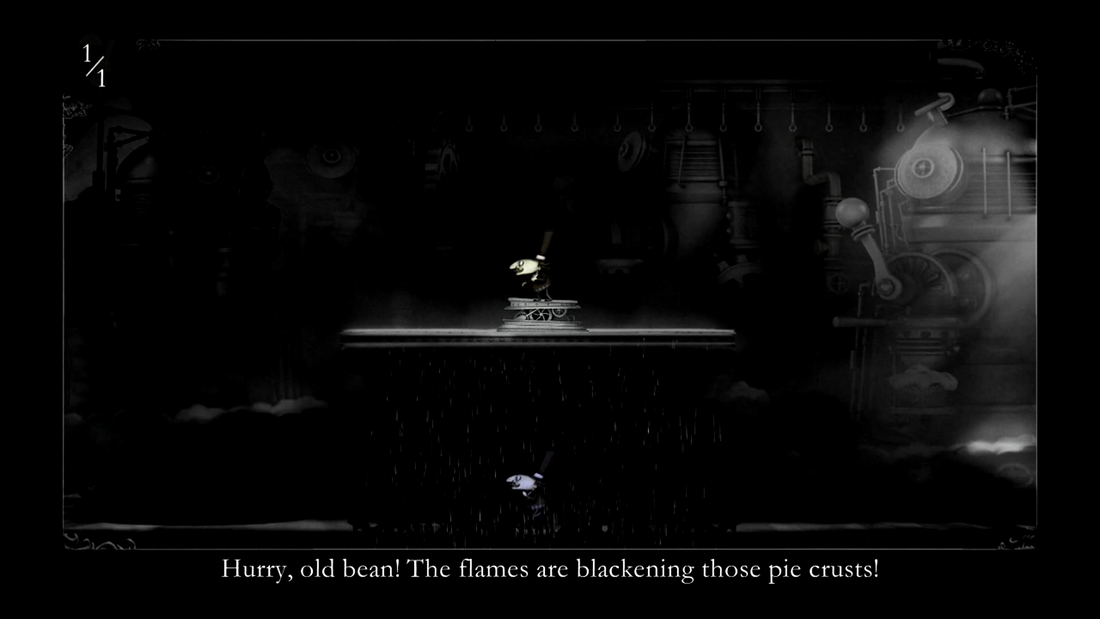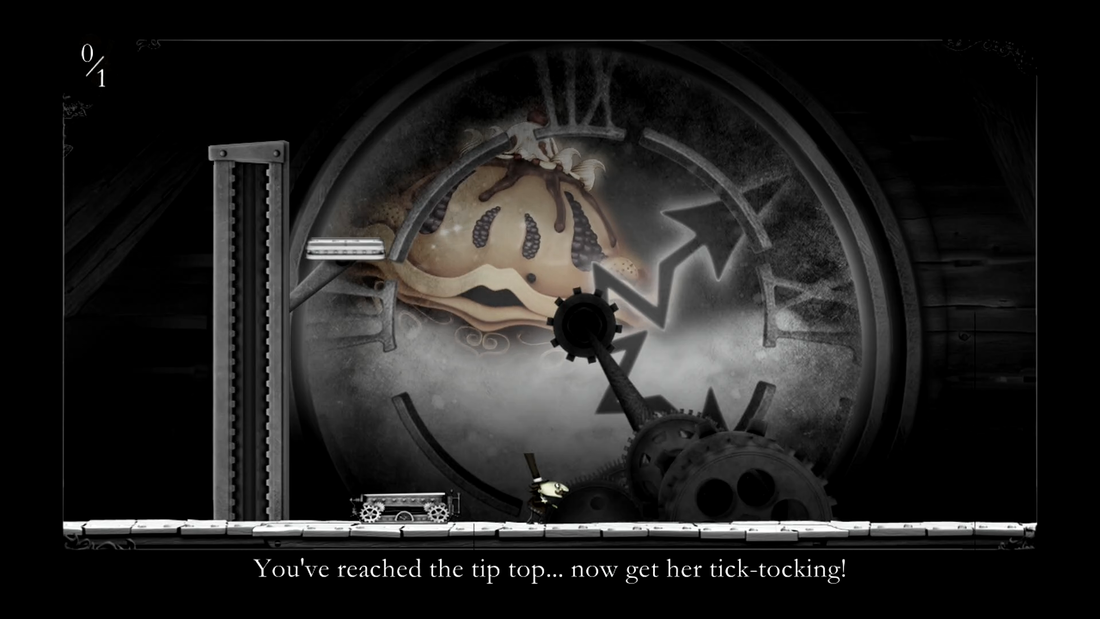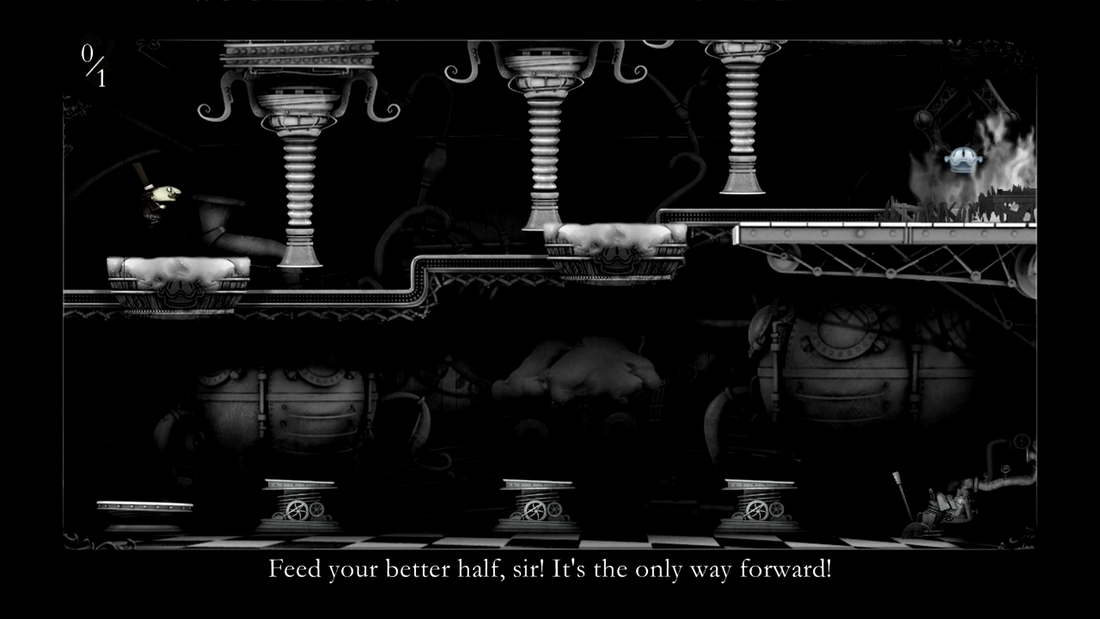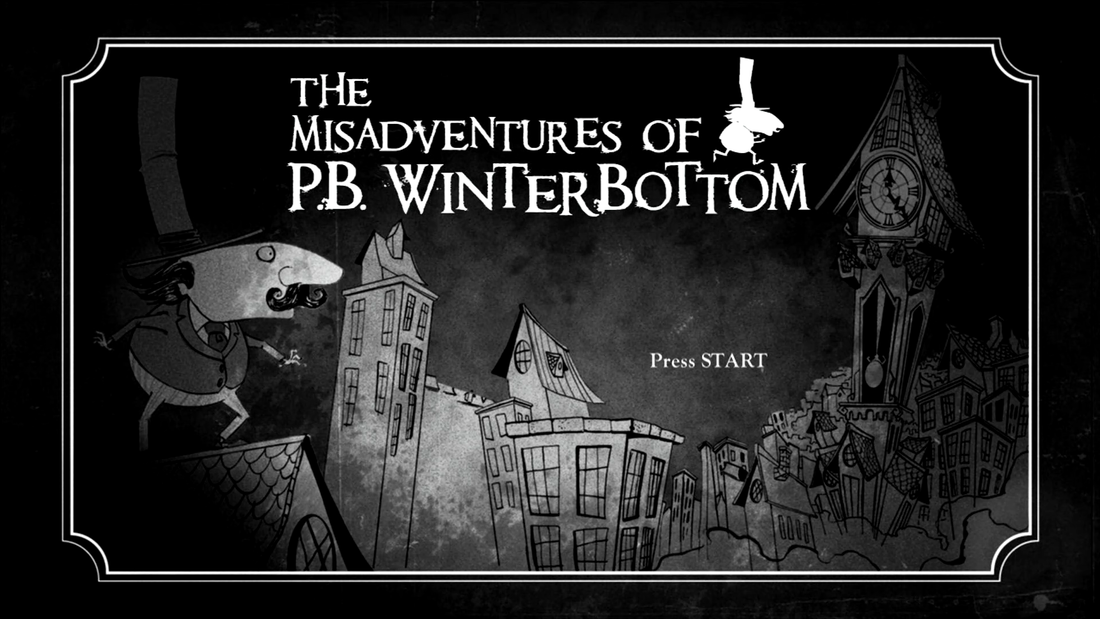THE MISADVENTURES OF P.B. WINTERBOTTOM (X360)
A console-exclusive that launched on Microsoft’s super-successful Xbox Live Arcade range in 2010, The Misadventures of P.B. Winterbottom was indicative of the more creative output that blessed the line-up. Whilst a lot of XBLA’s most popular output comprised of older arcade games and rare console releases from earlier generations, Winterbottom was more in keeping with a push to give unusual indies a chance in the spotlight.
Winterbottom consists of 2D, static screen platform-puzzling. The titular lead has a thing for gobbling pies and levels consist of conundrums that require the consumption of all the aforementioned pastries, often in a specific order, to beat them. Many of the play mechanics bear resemblance to Braid, as the player engages in time-bending antics through the utilising of clones and portals.
Some levels allow the player multiple clones, to help grab those hard-to-reach pies
Winterbottom’s gameplay is reasonable. The main character controls adequately, with the ability to jump, glide and swat his stick, to begin with, before learning to clone his movements for short periods. This allows the player to combine past runs to solve problems. Clones can be used to activate switches at a given moment, whilst several of them can form a climbable tower. However, interfering with a clone’s path (be it through the activation of traps or the player altering their course) will cause them to disappear.
Straight off the bat, Winterbottom’s presentation is an unconditional triumph. Developers The Odd Gentlemen devised an unusual but highly effective visual style, somewhat akin to how you’d imagine Tim Burton might tackle a silent film. Clean and sharp characters mix with grubby, industrial, sepia-toned levels that putter along like old film reels. They make for an effective and pleasing juxtaposition. Elegant borders and some marvellously lyrical title cards emphasise the game’s early-cinema chic, whilst reinforcing its oddball style.
Straight off the bat, Winterbottom’s presentation is an unconditional triumph. Developers The Odd Gentlemen devised an unusual but highly effective visual style, somewhat akin to how you’d imagine Tim Burton might tackle a silent film. Clean and sharp characters mix with grubby, industrial, sepia-toned levels that putter along like old film reels. They make for an effective and pleasing juxtaposition. Elegant borders and some marvellously lyrical title cards emphasise the game’s early-cinema chic, whilst reinforcing its oddball style.
Some brief, wacky cut-scenes add to its charm and a level selection styled as film posters is a lovely touch. An impressive big band soundtrack proves a nice fit and, in addition to the game’s 50 main levels, there’s a bunch of bonus scenes that require the player to scoff all the pies against the clock.
Winterbottom is well designed, but it is neither as absorbing nor as enjoyable as something like Portal. Solutions rarely conjure the same sense of satisfaction, the same “eureka!” moments. Winterbottom is unlikely to be something you’ll play at length. Often solutions feel obscure and difficult to formulate, stressing a need for very specific methods and with timing windows that leave very little room for error. Inevitably, this leads to some frustrating platforming. The early levels are the most enjoyable, but it isn’t long before you’ll end up with puzzle-instigated fatigue, juggling a hoard of Winterbottom clones in challenges that feel increasingly messy and chaotic.
Winterbottom is well designed, but it is neither as absorbing nor as enjoyable as something like Portal. Solutions rarely conjure the same sense of satisfaction, the same “eureka!” moments. Winterbottom is unlikely to be something you’ll play at length. Often solutions feel obscure and difficult to formulate, stressing a need for very specific methods and with timing windows that leave very little room for error. Inevitably, this leads to some frustrating platforming. The early levels are the most enjoyable, but it isn’t long before you’ll end up with puzzle-instigated fatigue, juggling a hoard of Winterbottom clones in challenges that feel increasingly messy and chaotic.
It isn’t a universal recommendation then, because there are many more enjoyable puzzler alternatives. It would be remiss not to compliment Winterbottom’s adept design, neat mechanics and gorgeous presentation, but it doesn’t generate the necessary magnetism to draw you back for more, longer-term. It’s likely that, whilst appreciating its creative style, only a minority of committed players will to stick around to see the credits roll.
